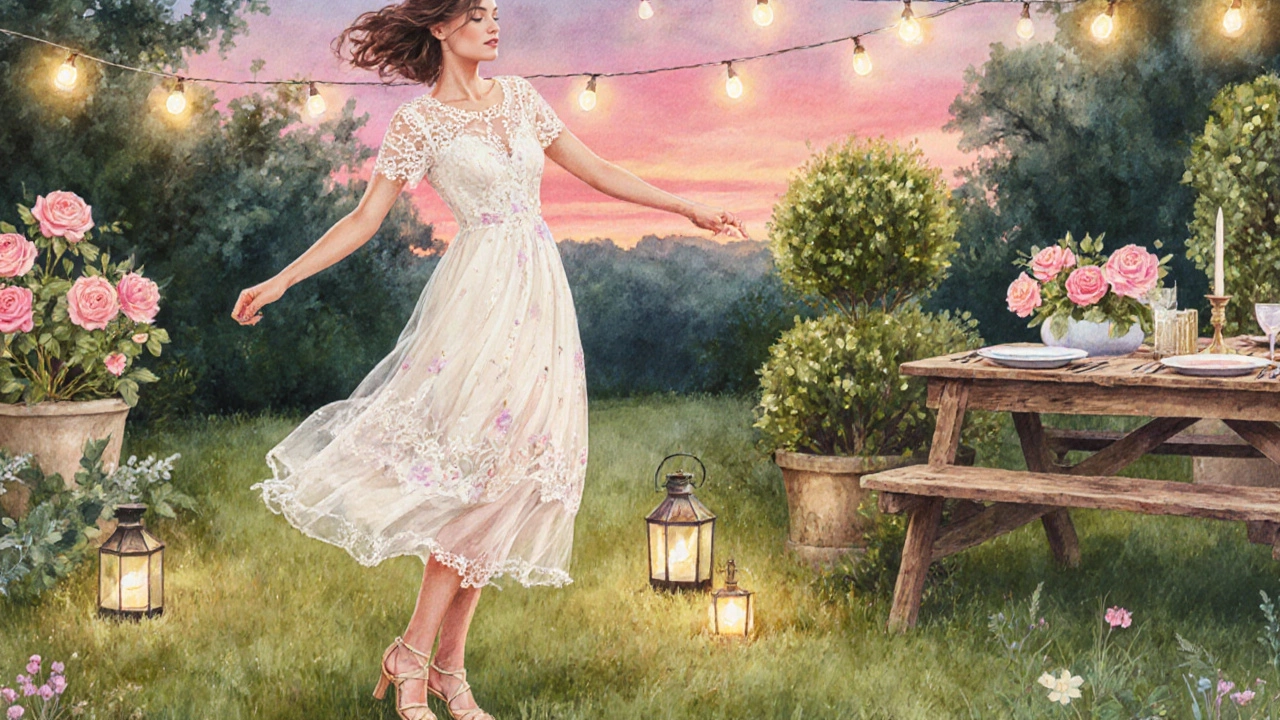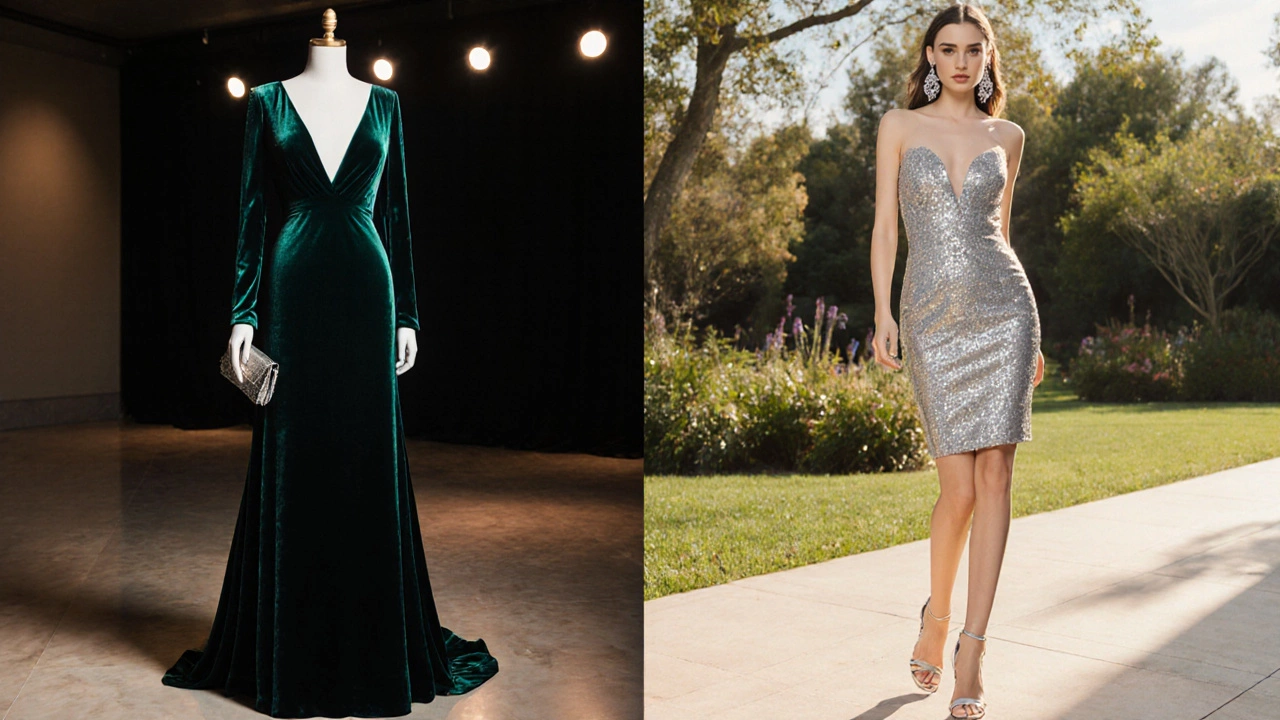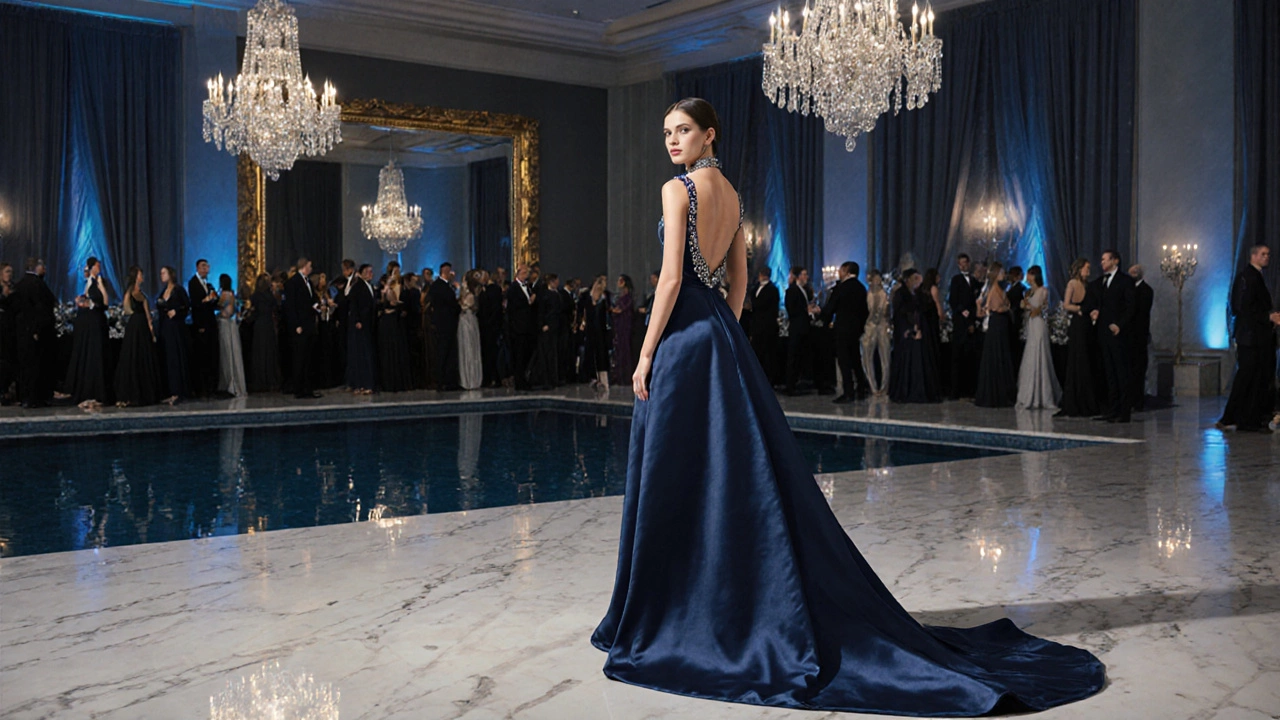Key Takeaways
- Long evening dresses are typically floor‑length and suit black‑tie or ultra‑formal events.
- Short evening dresses (often called cocktail or tea‑length) work well for semi‑formal gatherings and summer soirées.
- Pick length based on dress code, venue, season, and your body shape.
- Fabric weight and accessories can make a short dress feel more formal, while a long dress can be dressed down with the right shoes.
- Use the quick checklist at the end to decide the perfect length for your next night out.
When you ask yourself “Is an evening dress long or short?”, it helps to start with a clear definition. Evening Dress is a formal garment worn after sunset for occasions such as galas, weddings, or cocktail parties. The length-whether it sweeps the floor or stops above the knee-carries different signals about the dress code, venue, and personal style.
What Counts as “Long” and “Short”?
The fashion world uses a handful of standard terms to describe hemline depth. Floor Length means the garment reaches the floor, often with a slight train for added drama is the baseline for a “long” evening dress. Anything that lands anywhere between the ankle and the floor-sometimes called “full length” or “maxi”-fits this category.
On the shorter side, the most common descriptors are “tea‑length” and “cocktail”. Tea Length refers to a hem that falls between the knee and mid‑calf, reminiscent of the dresses worn to afternoon tea. Cocktail Dress generally ends above the knee, ideal for events that are dressy but not fully formal. The exact cut can vary by designer, but the visual cue is clear: short = above the knee, long = at least ankle‑length.
Classic Long Styles: Ball Gowns and Floor‑Length Silhouettes
If the invitation says “black‑tie” or “white‑tie”, you’re almost always expected to wear a Ball Gown a full‑skirted, floor‑sweeping dress that emphasizes a dramatic silhouette. The classic A‑line Silhouette features a fitted bodice that gently flares out from the waist, creating a balanced, flattering shape for most body types works beautifully at this length because it provides structure without hiding the elegance of the fabric.
Popular fabrics for long evening gowns include silk charmeuse, satin, taffeta, and velvet. Their weight helps the dress drape gracefully and hold a floor‑sweeping line even on a windy balcony. Long gowns also allow for intricate detailing-beading, sequins, or appliqués-without the risk of looking over‑adorned on a shorter canvas.
Short Options: Cocktail and Tea‑Length Dresses
When the dress code reads “semi‑formal”, “cocktail”, or simply “evening”, a shorter style often feels more appropriate. A Cocktail Dress typically hits above the knee and is cut to showcase a dressy yet relaxed vibe can be crafted from the same luxurious fabrics as a gown-think silk crepe or stretch satin-yet it looks less heavy.
The Tea Length hemline, landing between the knee and mid‑calf, offers a sweet spot for outdoor garden parties or summer weddings where you might be dancing on grass. Because the dress shows more leg, you can pair it with strappy heels or even classy flats without losing elegance.

Choosing Length Based on Event and Dress Code
Here’s a quick rule‑of‑thumb matrix:
- Black‑tie / white‑tie: Floor‑length ball gown or full‑length A‑line.
- Formal dinner (no black‑tie): Long dress is safe, but a sophisticated tea‑length in luxe fabric works.
- Semi‑formal / cocktail: Above‑knee cocktail dress or tea‑length.
- Outdoor / daytime evening event: Shorter hems (tea‑length) keep you comfortable and prevent tripping on uneven ground.
Always check the invitation for keywords like “black‑tie”, “formal”, “cocktail”, or “festive”. When in doubt, err on the longer side and adjust accessories to tone it down.
Body‑Type and Silhouette Considerations
Every shape can look stunning in either length; the trick is picking the right silhouette. For a pear‑shaped figure, an A‑line floor‑length or tea‑length helps balance hips. Hourglasses shine in fitted gowns that hug the waist, while a slightly flared cocktail dress can accentuate curves without adding bulk.
If you’re petite, a short dress often elongates the leg line. Pair a knee‑hit cocktail dress with nude heels for an uninterrupted silhouette. Taller readers can pull off dramatic floor‑sweeping gowns without feeling overwhelmed.
Season, Venue, and Practical Details
Winter galas call for heavier fabrics-velvet, brocade, or thick satin-and a floor‑length gown that keeps you warm. Summer soirées favour lighter materials ( chiffon, georgette) and shorter hems that let air circulate.
Indoor venues with polished floors highlight a flowing skirt, while outdoor venues with gravel or grass make a tea‑length or cocktail dress more practical. Consider the venue’s lighting too; a shimmering floor‑length dress catches overhead spotlights beautifully, whereas a short dress might require a flashier accessory to draw attention.

Styling Tips: Shoes, Accessories, and Finishing Touches
Long dresses pair naturally with classic pumps, stiletto heels, or elegant ankle‑strap sandals. If you want to make a floor‑length dress feel more relaxed, choose a sleek satin slingback or a low‑heeled mules.
Short dresses give you freedom to experiment. Strappy stilettos, embellished sandals, or even sophisticated loafers can work, depending on the vibe. When the hem is short, a statement clutch or bold jewelry becomes the focal point.
Lastly, mind the Hemline the edge of the dress where the fabric finishes. For long dresses, ensure it’s cleanly pressed to avoid tripping. For short dresses, a slight train or layered lace can add drama without sacrificing mobility.
Quick Comparison: Long vs Short Evening Dresses
| Attribute | Long (Floor‑Length) | Short (Above‑Knee / Tea‑Length) |
|---|---|---|
| Typical Dress Code | Black‑tie, white‑tie, ultra‑formal | Semi‑formal, cocktail, daytime evening |
| Fabric Preference | Heavy silk, satin, velvet, taffeta | Light chiffon, crepe, stretch satin |
| Season Suitability | Winter, cooler evenings | Spring, summer, warm evenings |
| Venue Compatibility | Indoor ballrooms, formal halls | Outdoor gardens, rooftops, casual venues |
| Shoes | Classic pumps, strappy heels | Stilettos, embellished sandals, loafers |
| Body‑Type Tips | All shapes-use silhouette to balance | Petite: short length elongates; tall: can wear floor‑length |
Decision Checklist
- Read the invitation: look for keywords indicating formality.
- Consider the venue: indoor ballroom vs outdoor garden.
- Match the season: heavier fabrics for cold nights, lighter for warm.
- Assess your body shape: pick a silhouette that flatters.
- Choose accessories that either elevate a short dress or tone down a long one.
Frequently Asked Questions
Is a floor‑length dress ever too much for a cocktail party?
If the invitation says “cocktail,” a full‑length gown can look overdressed. However, a sleek, minimalist floor‑length dress in a neutral color paired with simple jewellery can work, especially in a high‑end hotel lounge where the dress code leans upscale.
Can I wear a short dress to a black‑tie event?
Generally no. Black‑tie expects floor‑length gowns. If you love a short silhouette, look for a dramatic cape or an embellished bolero that adds coverage while preserving the short hem.
What shoe style works best with a tea‑length dress?
Strappy heels or elegant block heels are perfect. They showcase the leg while keeping the look refined. For garden parties, low‑heeled wedges prevent sinking into grass.
Is fabric weight more important than length?
Both matter. Heavy fabrics like velvet look luxurious at floor‑length, but can feel cumbersome on a short dress. Light fabrics drape better on longer hems, creating movement without bulk.
How do I choose accessories for a long gown?
Keep jewellery delicate-think a single statement necklace or chandelier earrings-so the focus stays on the dress’s flow. A small clutch and understated shoes complete the look.

